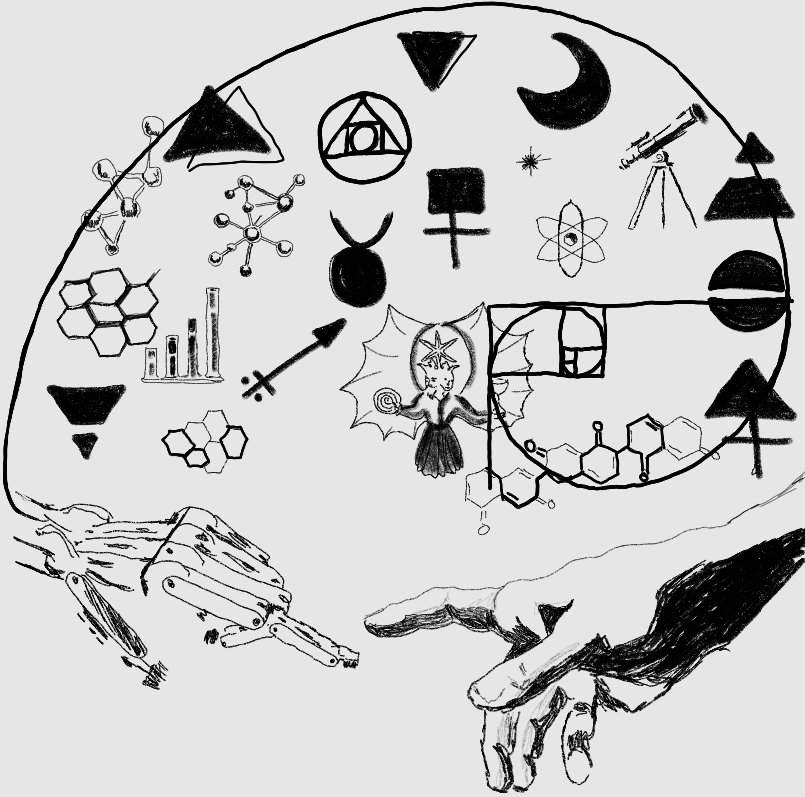“The way to learn is to assimilate. The way to know is to forget.” These words, which can be attributed to the principles of Chinese architecture, encapsulate a profound truth: Knowledge is not merely a product of accumulation but also one of transformation and integration.
In our fast-paced, hyper-rationalized world, dominated by science, technology, engineering and mathematics, we may overlook vital, alternative ways of coming to know things — instinctual, passionate and often mystical ways. Approaching knowledge from this standpoint offers not only insights into the fabric of existence but also new space for innovation and rediscovery.
While modern science prides itself on empirical rigor and secular detachment, history tells a different story: Pivotal breakthroughs have frequently emerged from dreams, visions and subconscious musings.
Friedrich August Kekulé’s dream of a snake eating its tail alluded to the structure of the benzene ring, which is foundational to organic chemistry. Niels Bohr’s model of the atom, likened to a miniature solar system, came to him in a dream. Such moments reflect an intuitive interplay between the seen and unseen, the tangible and the ephemeral. They suggest that imagination and intuition are as integral to discovery as data and experimentation.
Our relentless hustle culture, rooted in capitalist productivity, robs us of contemplative and soul-fulfilling time.
Simply being — feeling, envisioning, pondering — has become a luxury rather than a necessity. Scientific methodologies emphasize immediate results and reproducibility, leaving little room for ideas to percolate and evolve organically.
This neglect of rest and reflection stifles creativity and denies us the serendipitous insights that often arise when the mind is allowed to wander.
To return to Chinese architectural philosophy, learning is tied to assimilation, and knowing arises from constructive forgetting. This kinesthetic knowledge — rooted in experience, intuition and bodily awareness — is often dismissed in modern scientific discourse. Yet, it aligns with the idea that the body “keeps score,” as evidenced in discussions about trauma and healing. Our instincts, our “gut feelings,” are not baseless but deeply embedded in the physical and subconscious processes that connect us to the world.
The evolution of alchemy into modern chemistry illustrates how mystical practices can lay the groundwork for scientific advancement. Historically, science and spirituality were not adversaries but allies.
The ancient Greeks attributed creative genius to “daemons,” divine spirits that inspired human innovation. Romans referred to “genii,” personal guides believed to channel wisdom. These cultural frameworks acknowledged that creativity often arises beyond the individual’s conscious will.
Today, however, such notions are relegated to the realm of “woo-woo” — alternative or new-age perspectives dismissed as unscientific. But as we face increasingly complex, multidisciplinary challenges, integrating diverse ways of knowing becomes essential. The rigid separation between science and spirituality, between rationality and intuition, deprives us of tools to illuminate solutions to pressing modern problems.
Similarly, the art and architecture of ancient Greece and Rome exemplify the fusion of mathematics, aesthetics and spirituality. One-point perspective, with its vanishing point at the horizon, reflects an understanding of depth and infinity that resonates beyond the visual. Such integration of the measurable and the immeasurable is a reminder that knowledge is not confined to what can be quantified.
By embracing a multidisciplinary approach that honors both empirical evidence and intuitive insight, we open ourselves to discoveries that lie outside conventional frameworks. Mystical practices, long sanitized and marginalized in the name of progress, may hold keys to innovations that modern methods cannot unlock. The way forward lies in bridging the gaps — between science and spirituality, between rationality and intuition and between modernity and tradition.
As we navigate the challenges of the 21st century, let us not forget the power of dreams, the wisdom of the subconscious and the knowledge embedded in our bodies and histories. Let us make space for forgetting and for imagining worlds beyond the visible — worlds waiting to be understood and integrated into the tapestry of human knowing.














